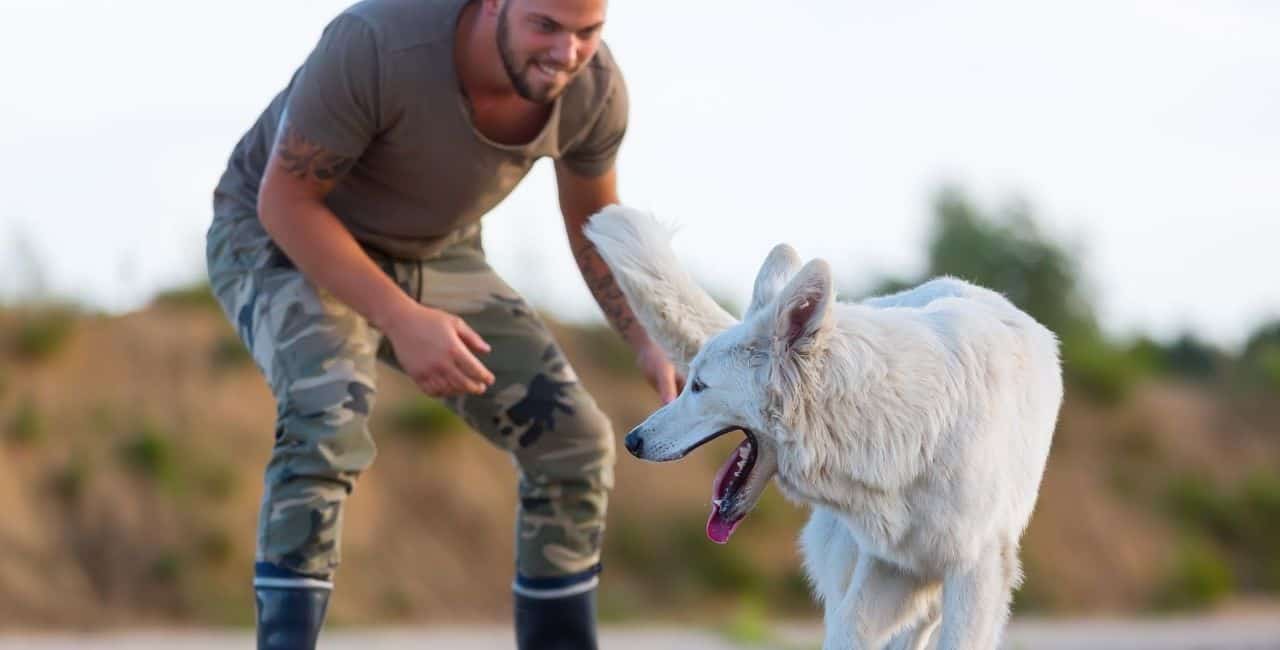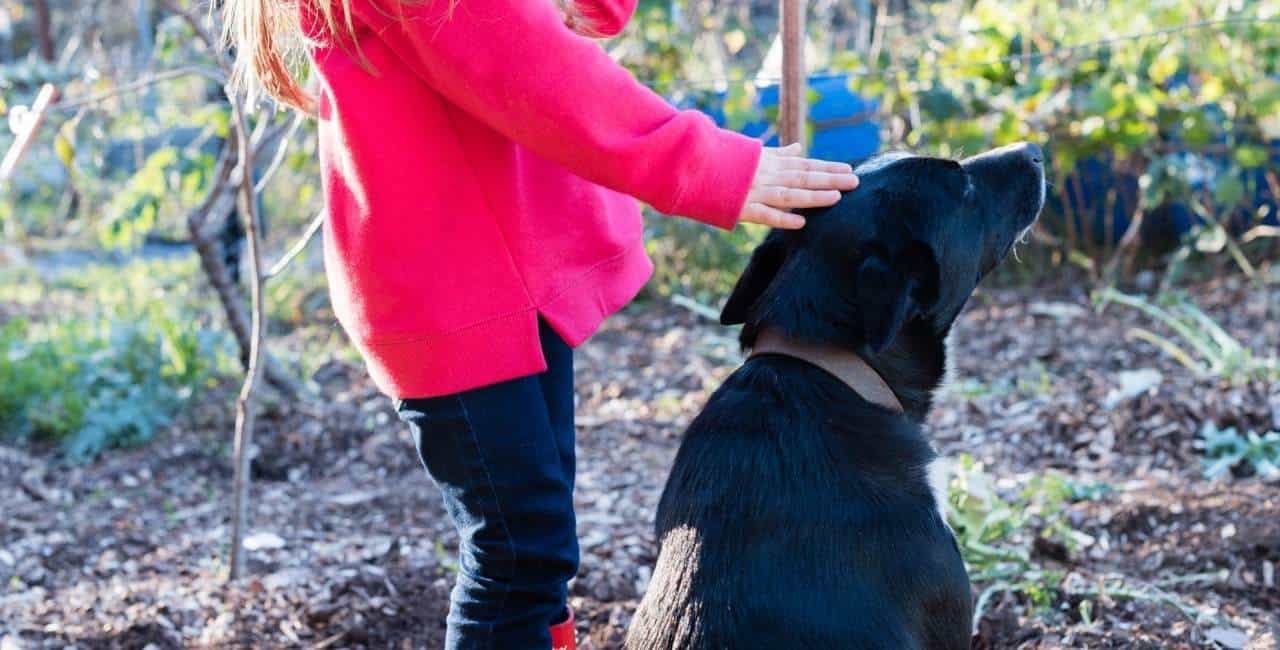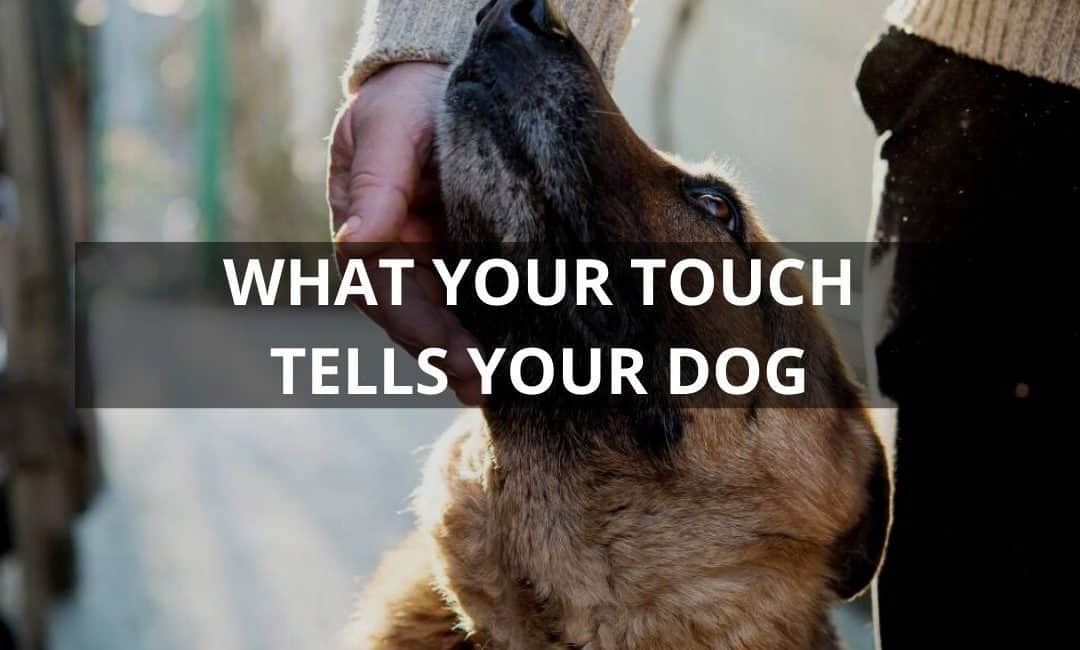Touch can be used to calm dogs, to energize them, to reinforce good behavior and more. In this article, we’ll look at the best ways to use physical contact to improve your dog’s training and behavior.
Whether we’re playing, training, or just hanging out, we dog lovers touch our dogs constantly. Frequent physical contact is the norm. And yet we rarely think about the ways we touch our dogs and how it affects them; it’s just something we do.
Physical contact affects communication. When we pet, stroke, rub, and rough-house with our dogs, it’s a form of communication – and influence. It affects how they feel, how they behave, and even how (and how well) they learn.
Is human touch calming to dogs?
Dogs can view touch in a variety of ways, depending on the situation and past experience (or lack thereof). If the dog is touched in a calming way, and if he’s in a frame of mind that allows him to be receptive to your touch, physical contact can be a wonderful way to calm your dog.
But, while touch may be calming to your dog, it really depends on type of touch, context of the situation, and even your dog’s temperament and prior history.
Depending on the context, human touch can be seen by dogs to be:
- Calming and soothing
- Affectionate
- Playful
- Attention-seeking
- Threatening
- Communicating a behavioral cue. (Such as when a dog is taught to sit when her hips are touched).
It’s important to remember that prior experience will affect how your dog responds to any touch, calming or otherwise.
Previous rough handling or physical punishment can make any dog uncertain or even fearful about being touched.
Prior abuse may have easily convinced your dog that being touched is not safe, and something to fear and avoid.
Puppies raised in sterile environments with little early handling may be so unsure of how to deal with human touch that they panic, become aggressive, or get overstimulated when handled.
Calming your dog with touch
While “calm” is just one emotional state we might want to encourage in our dogs, it is a very useful one. A calm dog is a more thoughtful dog – composed, and able to take life’s little challenges in stride. Even (maybe especially) high-energy, high-intensity working dogs are better off for having the ability to be calm when required.
To use touch to promote calm in your dog, the key is to use slow, gentle strokes, rather than quick pat-pat-pats or hearty rubs. How slow is slow?
Try this – as you stroke your dog, imagine that your hands have the ability to actually slow your dog’s breathing and heart rate. Pay attention to how your dog responds to your touch.
When your touch is acting to calm, you should be able to feel her body, heart, and breathing relax and get in sync with yours.
Energizing your dog with touch
Sometimes we want a faster, more energetic response from our dog. In that case, try a different way of touching and petting.
Heartier, faster, “whole hand” pats, playfully pushing your dog away from you, roughing up the fur, all tend to encourage movement and active engagement.
Just keep in mind that encouraging intensity and excitement during training usually results in less accurate behavior from the dog, at least in the beginning. Prepare to spend some time helping your dog and honing his ability to respond precisely while amped up.

Using touch for praise during training
Praise and petting are two distinct things, and there are certainly times when a big smile on your face and sincere verbal praise is the best, most effective way to let your dog know how pleased you are with her behavior.
That said, certain types of touch and petting work well to communicate approval and appreciation to your dog during training.
In general, when you wish to use physical touch as praise:
Slow, light finger or thumb strokes on the dog’s head and forehead are wonderful for physically praising any stationary position (for instance, Stays) where the dog is focused on you. This touch promotes calm and encourages the dog to remain still.
Whole hand, light to medium pressure, slow strokes on the chest and shoulders will help calm and steady the dog who is either over-excited (“busting out of her skin”, wanting to go see and do everything at once), as well as the dog who is nervous and uncomfortable (wanting to get out of the situation if at all possible).
Use this kind of touch to reward whatever level of self-control your dog is capable of in that situation: a simple Sit, rewarded with a quiet voice and calming, massage-like strokes is an effective way to help your dog gain composure in difficult situations.
When using petting for praise, keep in mind that whether your dog sees petting as praise will depend on her temperament, mood at that moment, and whether she’s focusing on her work (and therefore unlikely to appreciate the distraction of being petted).

When touching and petting your dog may not be helpful
It’s human nature to use touch to communicate, and we do it with dogs in most every situation. But did you know there are times when touching your dog can actually work against you, no matter how good your intent?
There are a few ways touch can be counter-productive when working with your dog. In some instances, touch can:
- Reinforce unwanted behaviors
- Be mistaken for play
- Distract your dog from listening to commands
When touch reinforces unwanted behaviors
We’ve talked about using touch for praise and reinforcement, but what about when you’re trying to avoid reinforcing your dog?
Meaning, you don’t want to do something that will encourage your dog to prolong or repeat a behavior. It could be any unwanted behavior, but common examples would be a dog that’s jumping up on you, grabbing things that aren’t hers, barking, being fussy, or pulling on the leash.
Because touch can act as a reinforcer, be sure your hands are off the dog when you are trying to discourage an undesirable behavior. Save the hands-on until your dog has stopped doing the thing you don’t like.
When touch is mistaken for play
In certain situations, touch can be interpreted as play. Let’s take the example of a high-spirited dog jumping up for attention.
What’s the most common human response? Push the dog off you!
Unfortunately, in this case touching your dog is not only reinforcing (see above), but it will often be seen as an invitation to play. Which is completely the opposite of what you want at that moment.
As above, hold off on touching your dog in this and similar situations until you can use your hands for praising behavior you like.
When touch distracts from listening to commands
The fact is, even calming touch can be a distraction, especially with an inexperienced or untrained dog. This is because, in dogs, the sense of touch will always take priority over sounds like words.
This means that your dog actually can’t process what you’re saying as well if you’re touching him at the same time.
So, if you’re asking your dog to respond to some direction or command, make sure you’re not muddying the signals by touching your dog at the same time.
As I like to tell my dog training clients, “hands on for praise, hands off for commands.â€
If you’d like to learn more about how touch affects learning, I found this article quite interesting:
Does Physical Contact with a Dog or Person Affect Performance of a Working Memory Task?Â
Wrapping Up
Touch can be a powerful tool in dog training. And like any tool, it’s one that works most effectively with a little understanding and practice.
How you touch your dog, when you touch him, and during which activities will all affect what information your dog gets from your touch.
Most dogs will respond positively to touch and consider it rewarding – as they should! But prior experience, including early socialization, will affect how a dog responds to touch, as well.
When using touch during training, try to match your hands-on praise to your dog’s mood, the situation, and the energy level you wish to encourage.
And remember:
“Hands off for commands, hands on to reinforce/praiseâ€.
Give these tips a try, and see how different types of touch affect your dog. I think you’ll find it enjoyable for both of you, and a nice tool to add to your training toolbox!
I hope you enjoyed and found value in this article. If you did, please share with your friends!
Best,
julie
(bio)

Thank you for all of these “reminders”. Hope you continue to be well.
Thank you, Cindy! Glad you enjoyed the article. Hope you and yours are doing well and hanging in there!